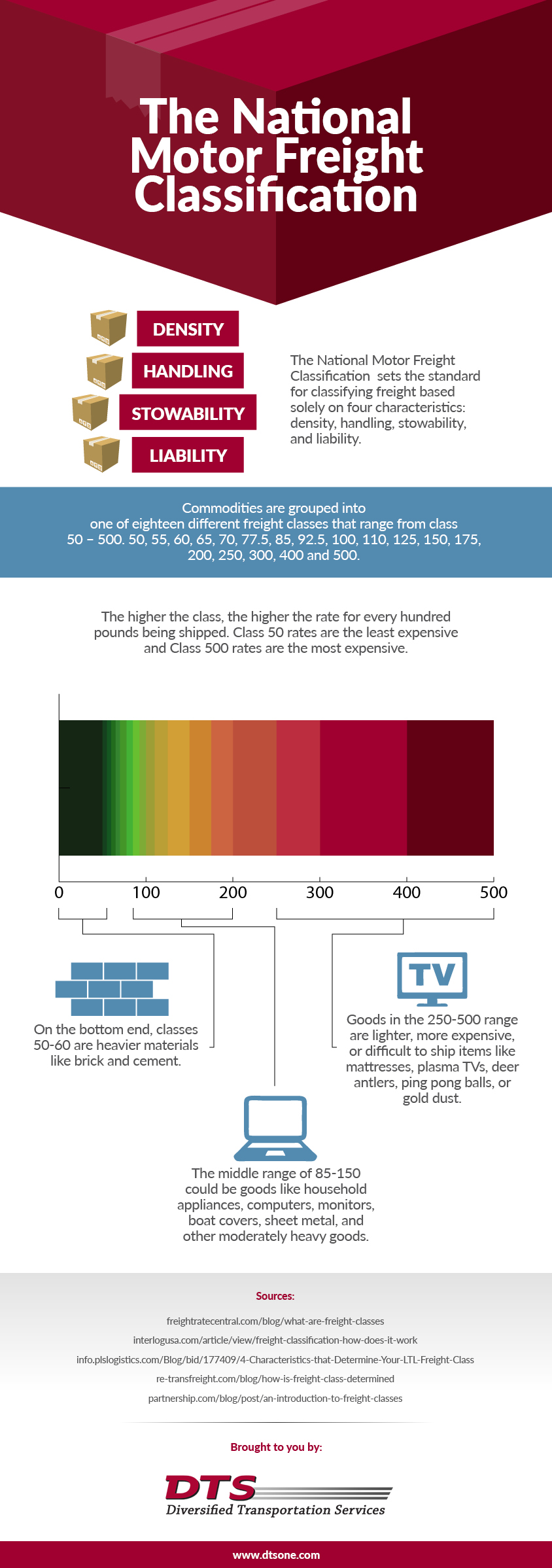
In any industry, extensive guidelines govern how nearly every item imaginable should be handled and hauled. The National Motor Freight Classification categorizes different goods into shipping classes for a more standardized and predictable pricing structure.

Overall, National Motor Freight Classification separates freight based on four key characteristics: density, handling, stowability, and liability. These characteristics then determine how goods are ranked and separated into freight classes.
Overall, there are 18 different shipping classes, which range from class 50 to class 500. These eighteen freight classes are numbered 50, 55, 60, 65, 77.5, 85, 92.5, 100, 110, 125, 150, 175, 200, 250, 300, 400, and 500.
Though this method seems counterintuitive, it is essential for creating a “spectrum” of LTL freight classes that are used to calculate an LTL shipping quote. At the bottom end of the spectrum, class 50 is the least expensive, and class 500 at the top is the most expensive.
An item’s density, handling requirements, stowability, and liability rank it from high to low on the freight class spectrum. The higher the class, the higher the rate for every hundred pounds of that class that need to be shipped, and the higher the total shipment cost.
Heavy, non-fragile materials like brick and cement make up the bottom end of the spectrum, in the 50s and 60s. These items are dense and can be neatly stacked, which helps lower the shipping rate.
In the middle freight class range of 85-150, moderately heavy and valuable items like computers, appliances, boat covers, and sheet metal can be found. Though less easy to stack than bricks, middle-range items are still fairly stowable.
Finally, light, expensive, and difficult-to-ship items make up the 250-500 LTL freight class range. High-class items might include mattresses, plasma TVs, deer antlers, ping pong balls, or gold dust. Items like these are awkward to handle, difficult to stow or have a low density, which makes them more expensive to ship.
Use this guide to bring a little clarity to how to determine freight classes. With the National Motor Freight Classification system, nearly any good can be categorized for transparent and efficient LTL shipping quotes.
Whether you're a company looking to improve one facet of your supply chain, your entire supply chain, or simply looking for a transportation and logistics consultation, we can help.